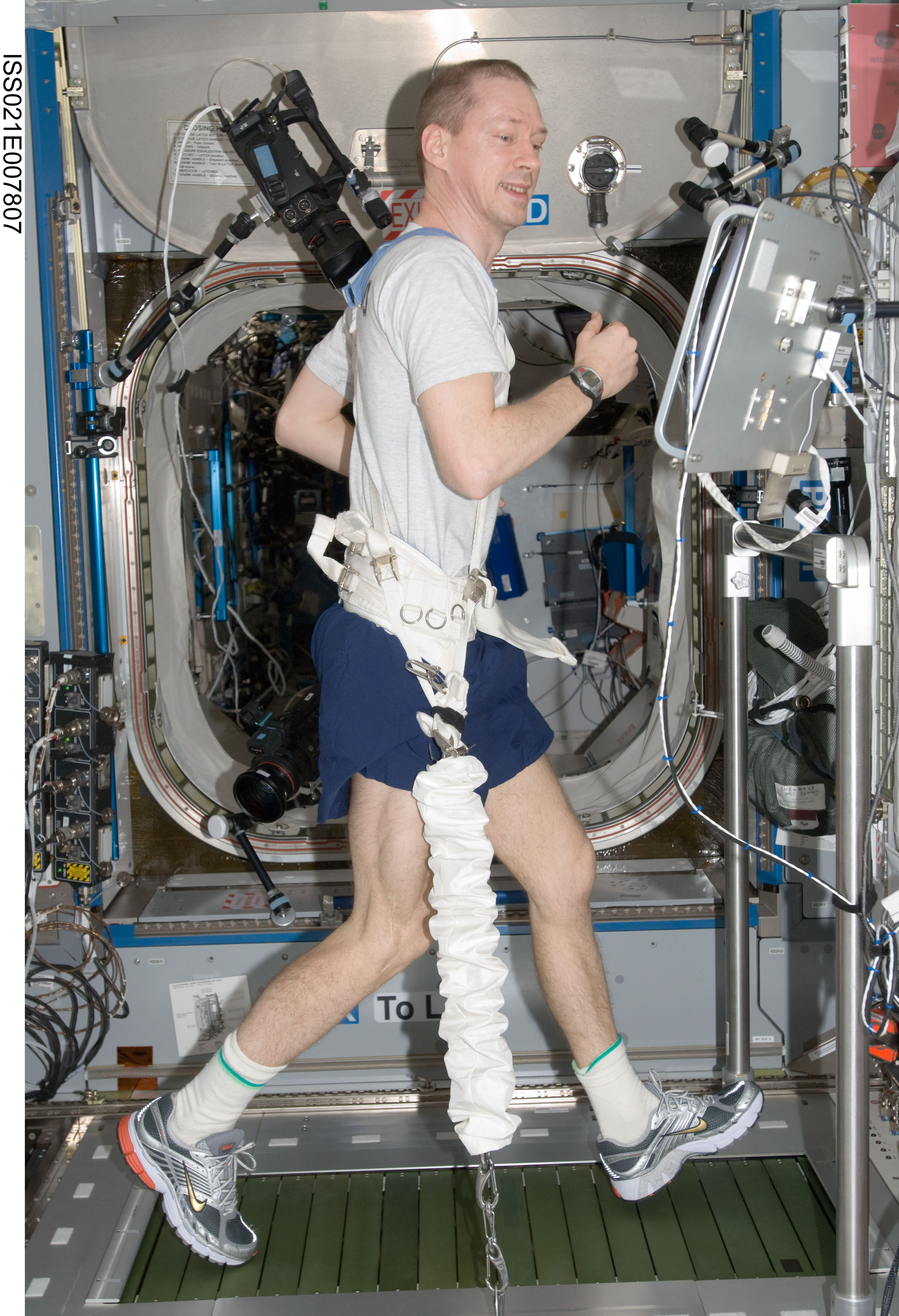Exercise
If you don’t like exercise, then life on a space station is not for you! Each crew member on the International Space Station (ISS) will spend up to two hours a day on various exercise machines. All of this effort is essential to counteract the physical decline that occurs during long space flights. It also makes it easier for astronauts to re-adapt to normal gravity when they return to Earth.
Bones, heart and lungs, muscles and organs all change in weightlessness. Changes include loss of calcium from bones, and a weakening of the heart, which no longer has to work against gravity to pump blood around the body. The longer an astronaut stays in space, the more noticeable the changes that take place.
Doctors on the ground monitor the fitness of the crew and work out how much their condition has changed. They can instruct the crew to alter their exercise programmes, if required. There are several exercise machines on board the ISS that are used by the astronauts. They include two treadmills, a resistive exercise device, and a cycling machine (ergometer). In each case, the astronauts have to be attached to the machine so that they don’t float away!
The treadmills are used to simulate walking and running in normal gravity. The cycle can be used to exercise arms or legs. The resistive exercise device is rather like weightlifting on Earth. It allows the user to complete a series of physical exercises while restrained by elastic bungee cords. A portable computer monitors heart rate and other vital signs while the astronauts are using the machines.
Last modified 05 July 2011





